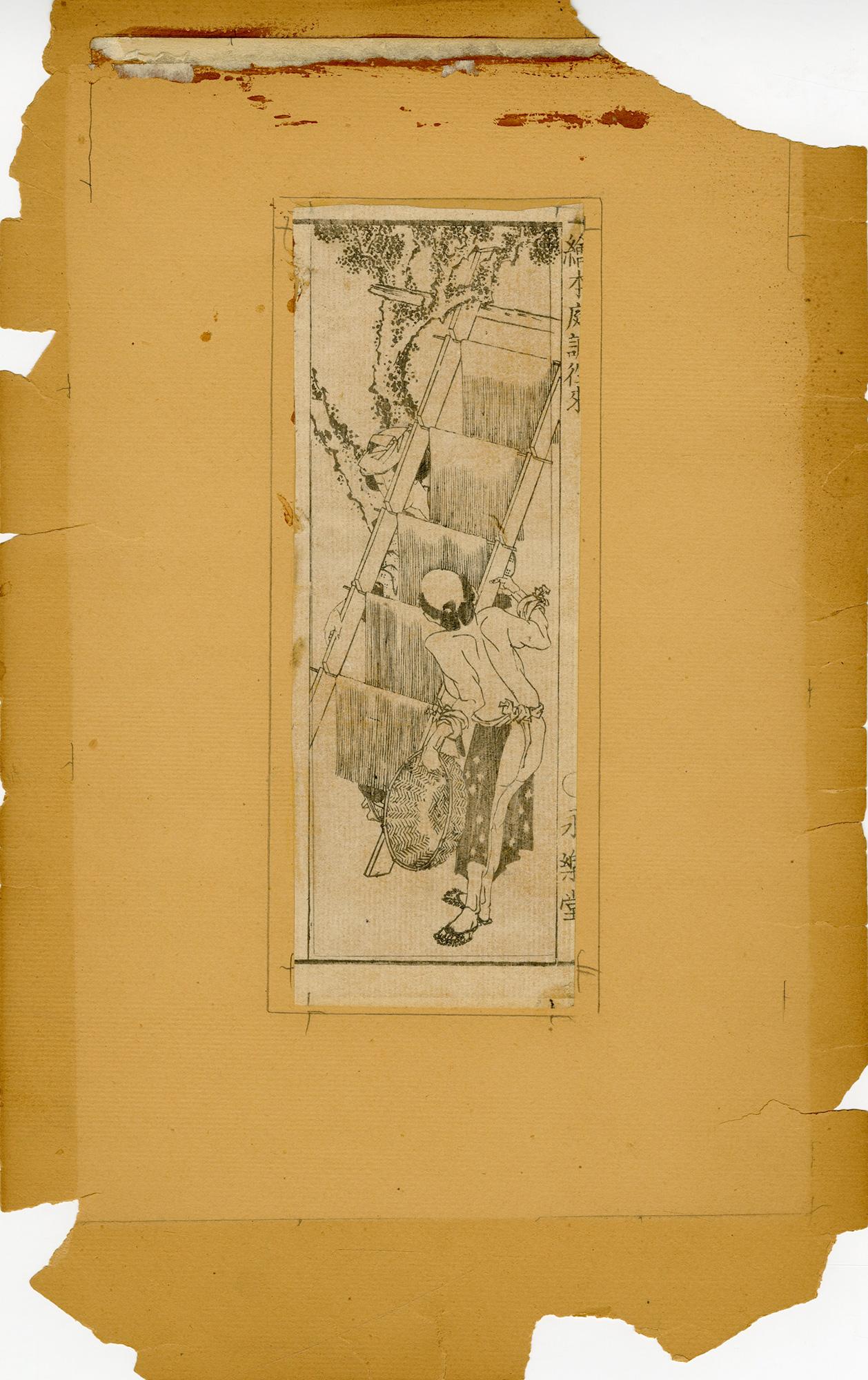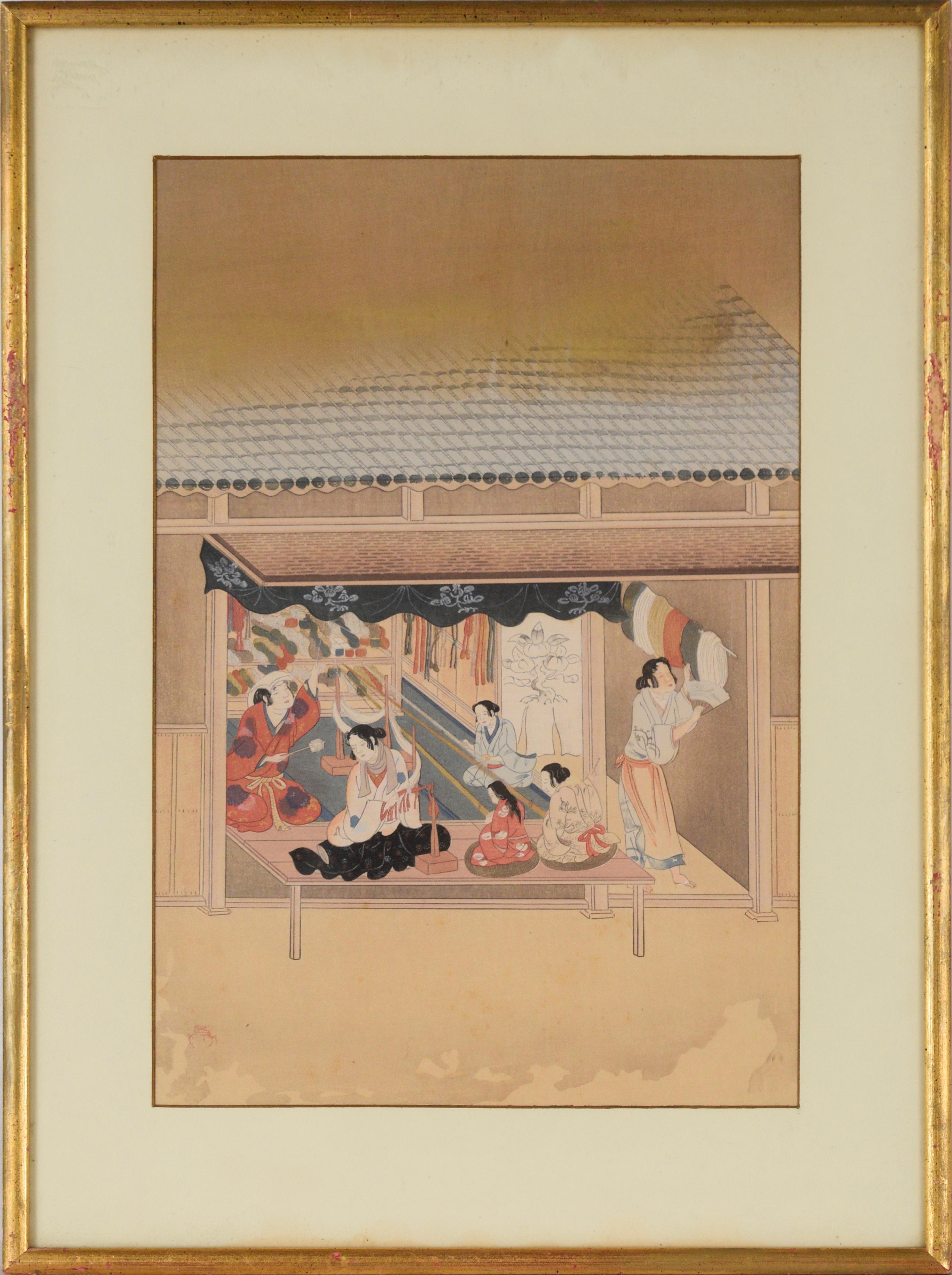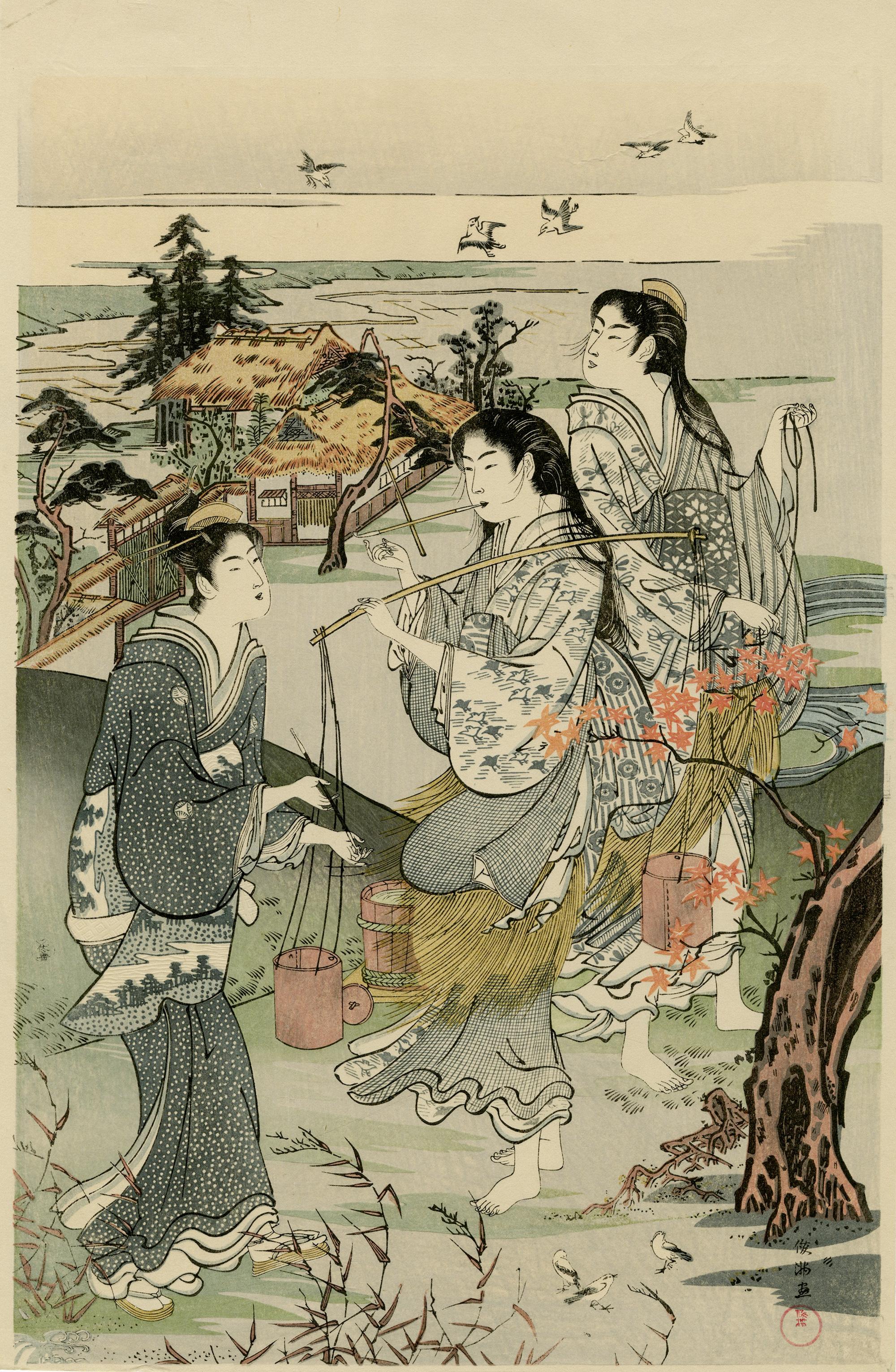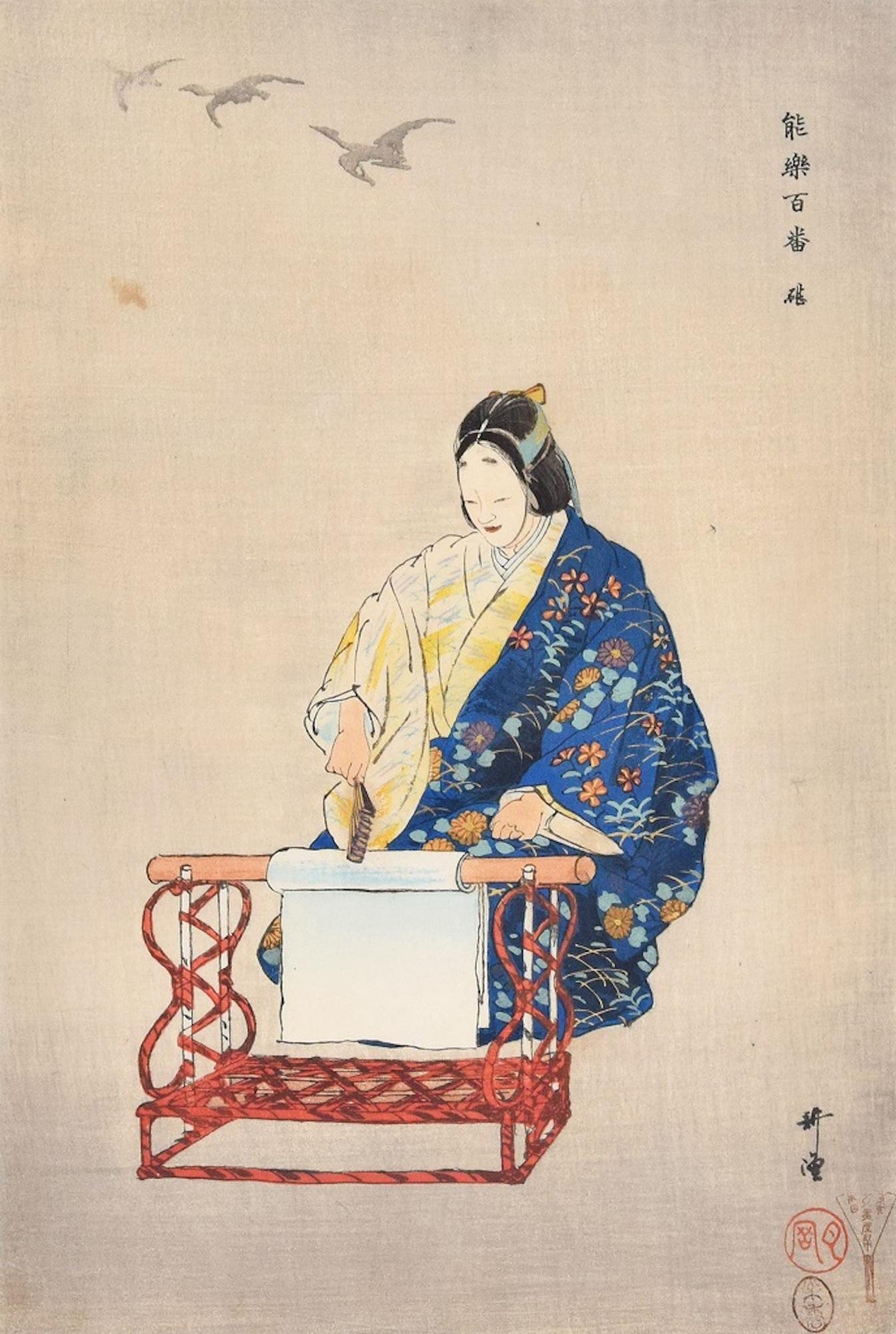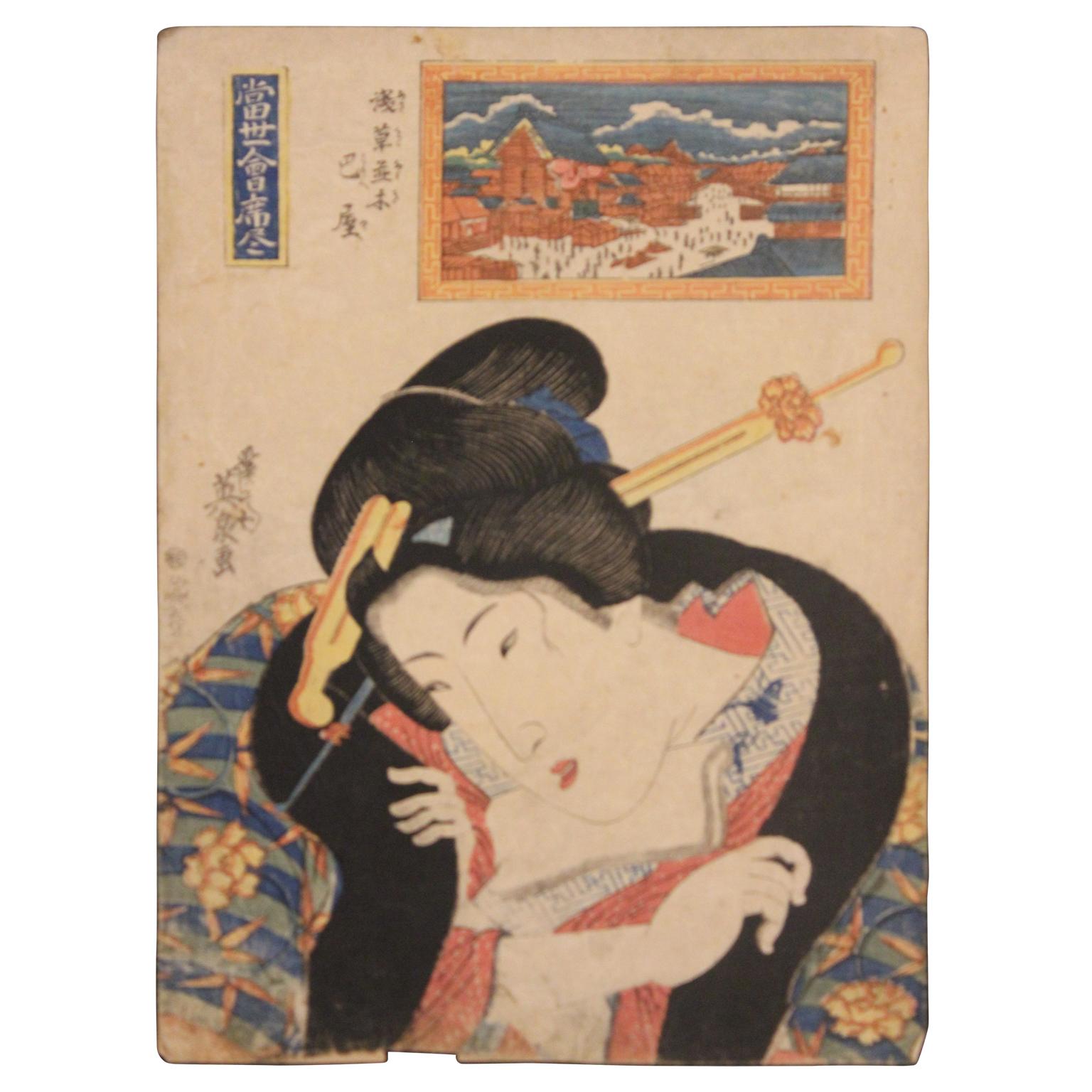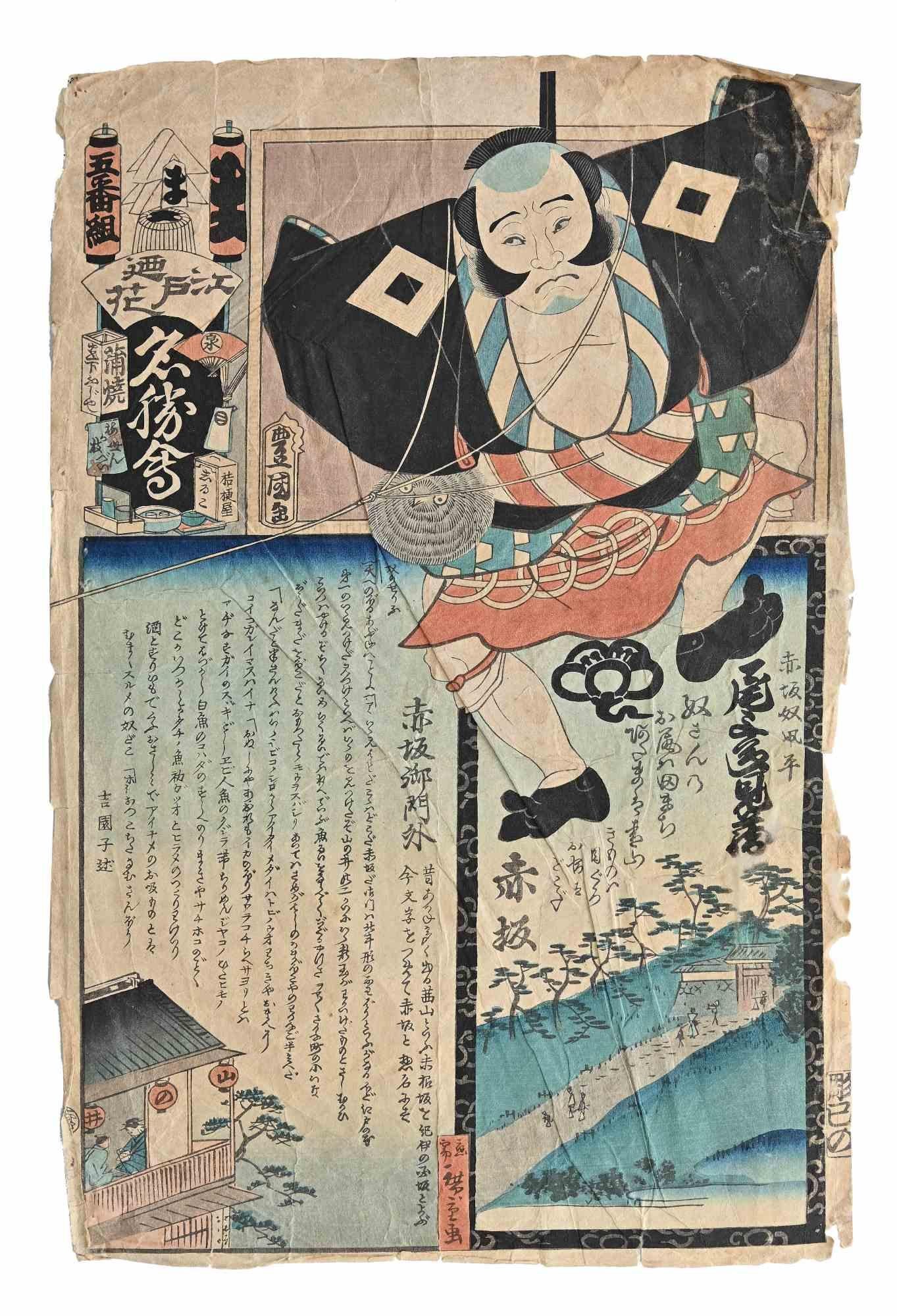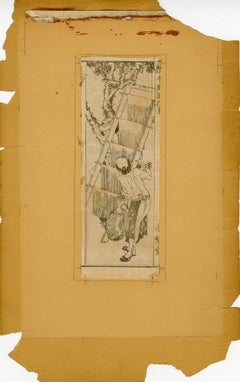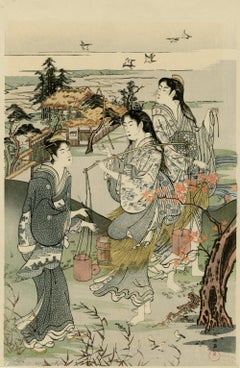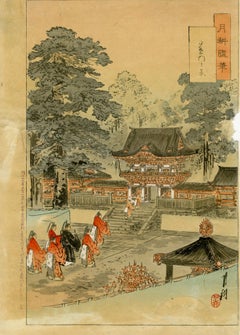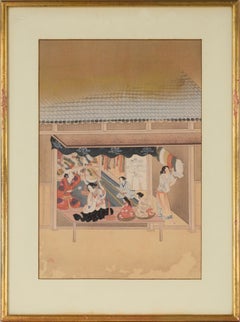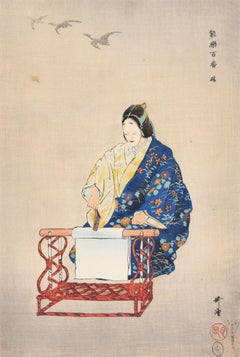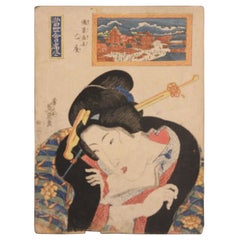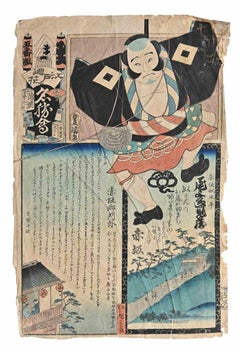Items Similar to Dyeing Paper
Want more images or videos?
Request additional images or videos from the seller
1 of 4
Okumura MasanobuDyeing Paper1770
1770
$300
£231.34
€263.80
CA$427.86
A$467.60
CHF 246.07
MX$5,600.73
NOK 3,097.01
SEK 2,892.49
DKK 1,970.36
About the Item
Japan: circa 1770.
Woodcut on cream laid paper, 7 1/4 x 2 1/2 inches (182 x 63 mm), narrow margins. Laid down to non-archival board with scattered soiling and some adhesive staining.
Okumura Masanobu (Japanese 1686 – 13 March 1764) was a Japanese print designer, book publisher, and painter. He also illustrated novelettes and in his early years wrote some fiction. At first his work adhered to the Torii school, but later drifted beyond that. He is a figure in the formative era of ukiyo-e doing early works on actors and bijin-ga ("pictures of beautiful women"). While Masanobu's early life is largely undocumented, he is believed to have been born about 1686, possibly in Edo (modern Tokyo). Edo was a small fishing village when Tokugawa Ieyasu chose it as his administrative capital of the Tokugawa shogunate, and by the early 17th century the city had prospered and its population had grown to half a million. Masanobu appears to have been self-taught painter (though he did study poetry under Tachiba Fukaku); he is not known to have belonged to any artistic school. His early work shows the influence of the Torii school of ukiyo-e painting, particularly Torii Kiyonobu I, and he likely learned from the examples of Torii Kiyomasa and the early ukiyo-e artist Hishikawa Moronobu. A print album published by Kurihara Chōemon in 1701 depicting courtesans in the Yoshiwara pleasure district is Masanobu's earliest surviving signed work, followed by a similar work ten months later. Moronobu provided the illustrations, and sometimes text, for at least twenty-two ukiyo-zōshi novels and librettos for puppet theatre between 1703 and 1711. These included a modernized illustrated version of the 11th-century Tale of Genji in eighteen volumes, whose translation was by Masanobu. -Vergez, Robert, Early Ukiyo-e Master: Okumura Masanobu, Kodansha International, Tokyo, 1983.
- Creator:Okumura Masanobu (1686 - 1764)
- Creation Year:1770
- Dimensions:Height: 1.25 in (3.18 cm)Width: 2.5 in (6.35 cm)
- Medium:
- Movement & Style:
- Period:
- Condition:
- Gallery Location:Middletown, NY
- Reference Number:Seller: BH12061stDibs: LU1979213394772
About the Seller
5.0
Vetted Professional Seller
Every seller passes strict standards for authenticity and reliability
Established in 2004
1stDibs seller since 2022
77 sales on 1stDibs
Typical response time: 22 hours
- ShippingRetrieving quote...Shipping from: Middletown, NY
- Return Policy
More From This Seller
View AllDrying Paper
Located in Middletown, NY
Woodcut on cream laid paper, 7 1/4 x 2 1/2 inches (182 x 63 mm), narrow margins. Laid down to non-archival board with scattered soiling and some adhesive staining.
Okumura Masanobu (Japanese 1686 – 13 March 1764) was a Japanese print designer, book publisher, and painter. He also illustrated novelettes and in his early years wrote some fiction. At first his work adhered to the Torii school, but later drifted beyond that. He is a figure in the formative era of ukiyo-e doing early works on actors and bijin-ga ("pictures of beautiful women").
While Masanobu's early life is largely undocumented, he is believed to have been born about 1686, possibly in Edo (modern Tokyo). Edo was a small fishing village when Tokugawa Ieyasu chose it as his administrative capital of the Tokugawa shogunate, and by the early 17th century the city had prospered and its population had grown to half a million. Masanobu appears to have been self-taught painter (though he did study poetry under Tachiba Fukaku); he is not known to have belonged to any artistic school. His early work shows the influence of the Torii school of ukiyo-e painting...
Category
Early 18th Century Edo Figurative Prints
Materials
Handmade Paper, Woodcut
Mu-Tamagawa
Located in Middletown, NY
Woodcut in ink with embossing and hand-coloring in watercolor on laid Japon paper, 16 x 10 inches (406 x 253 mm), ōban tate-e, full margins. Scattered handling wear and toning, other...
Category
Late 19th Century Edo Portrait Prints
Materials
Watercolor, Handmade Paper, Woodcut
Toshogu Shrine
Located in Middletown, NY
In image of the Tokugawa family paying homage to Tosho-gu Shrine in Nikko.
Tokyo: Matsuki Heikichi, 1896
Woodcut in ink with embossing and hand-coloring in watercolor on handmade m...
Category
Late 19th Century Edo Figurative Prints
Materials
Watercolor, Handmade Paper, Woodcut
(Untitled), from the series Pictures of ladies' etiquette
By Yoshu Chikanobu
Located in Middletown, NY
Tokyo: c1893.
Wooblock tryptich printed in colors on hand laid mulberry paper, 14 3/4 x 29 inches (375 x 737 mm), the full sheet. Meiji period. In very good condition with extensive...
Category
Late 19th Century Figurative Prints
Materials
Handmade Paper, Woodcut
Pilgrimage to Enoshima
Located in Middletown, NY
Tokyo: Matsuki Heikichi, 1893
Woodcut in ink with embossing and hand-coloring in watercolor on handmade mulberry paper, 14 1/2 x 9 7/8 inches (368 x 251 mm), ōban tate-e, full margi...
Category
Late 19th Century Edo Portrait Prints
Materials
Watercolor, Handmade Paper, Woodcut
Actor Iwai Shigaku as Somenoi in "Denka chaya adauchi"
By Kuniyoshi
Located in Middletown, NY
Actor Iwai Shigaku as Somenoi in "Denka chaya adauchi" (Revenge at the Denka Teahouse), by Shigeharu, Ryusai (also called Kuniyoshi)
Tokyo: Horie Ichiba Wataki, 1835.
Woodcut on la...
Category
Early 19th Century Edo Portrait Prints
Materials
Handmade Paper, Laid Paper, Woodcut
You May Also Like
Japanese Artisans - Silk Dying -Japanese Woodblock Print
By Tosa Mitsuyoshi
Located in Soquel, CA
Japanese Artisans - Japanese Woodblock Print J
Japanese woodblock depicting six women, all wearing vibrant kimonos, working on crafts by Tosa Mitsuoki (Japanese, 1617-1691). Japanese,c. 1600. Handcraft depiction (dye works).Section from a painted screen with presentations of handcraft.Kita-in, Saitama.
Stamped lower left.
Presented in a white mat and giltwood frame.
Frame: 19"H x 14"W
Mat: 18.25"H x 13.25"W
Image: 14.5"H x 9.5"W
Tosa Mitsuoki was a Japanese painter, reinvigorating the Yamato style of classical Japanese painting. Yamato-e originated from interest in reproducing early Tang dynasty paintings, and was later reinvented and further refined to fit Japanese cultural perceptions in the late Heian period. Yamato, sometimes referred to as wa or kazu had become synonymous with the Tosa-ha by the Muromachi period as a way for Japanese artist to distinguish their works from those of mainland Chinese paintings, kara-e. Yamato-e incorporated various visual and literary techniques for establishing narrative. Works were not always accompanied with text and may rely on heavily on period specific visual motifs, icons, and symbols to relay a story or theme. Tosa style by the time of Mitsuoki focused heavily on depicting themes of plants and nature, famous places, meisho, the four seasons, shik, bird-and-flower, kacho. Many of these popular symbols and icons from mimicking Chinese practices, treating the original Chinese masterwork as a sort of prototype to improve upon. Popular formats for Mitsuoki's pictures were wall scrolls kakemono, or handscrolls that would be read from right to left with the accompanied story, sliding doors fusuma and folding screen panels byobu that featured up to six panels. Mitsuoki's style incorporated the depth and calligraphy techniques of ink wash brushwork similar to Song dynasty and Yuan dynasty Chinese court paintings...
Category
1920s Edo Landscape Paintings
Materials
Paper, Ink, Woodcut
Kinuta - Original Woodcut Print by Tsukioka Kôgyo - 1922
Located in Roma, IT
Kinuta is a wonderful color xylograph on paper, made by the Japanese master Tsukiota Kogyo (1869-1927).
The artist's signature is in the red seal printed in the lower right corner "Tsukioka".
From the series "One Hundred No Dramas" (Nogaku Hyakuban), published by Matsuki Heikichi (Daikokuya) and published in 1922.
Kinuta is the wife of the prince of Ashiya, portrayed while she is ironing the laundry, beating a sort of fan so that the sound brings her wish to her husband in the distant capital.
In excellent conditions, except for a little stain on the higher left margin, and some light decolorations, this original print preserves his freshness of line and colors. The texture of the princess's kimono has a precious golden hatch, and the artwork keeps still today the rare beauty and the incredible delicatessen inspired his creation, and in perfect syntony with the Japanese mood.
Tsukioka Kōgyo,
Sometimes called Sakamaki Kōgyo, (1869 - 1927) was a Japanese artist of the Meiji period, a student and adopted son of Tsukioka Yoshitoshi, and also studied with Ogata Gekkō...
Category
1920s Figurative Prints
Materials
Woodcut
Biensennyo-ko Japanese Woodblock Print
By Keisai Eisen
Located in Houston, TX
Japanese Woodblock print of a Biensennyo-ko a powder face women. Behind the women is a framed cityscape. The print is possibly from the series "Eight Favorite Things in the Modern World". The woodblock print is printed on rice paper. The print is not framed.
Artist Biography: Keisai Eisen...
Category
Early 1800s Edo Portrait Prints
Materials
Woodcut
The Living Kit - Woodblock Print after Utagawa Kunisada - Late 19th Century
By Utagawa Kunisada (Toyokuni III)
Located in Roma, IT
The Living Kite is an original Woodcut print realized in the late 19th century after Utagawa Kunisada.
Good condition except for some damaged paper on the edge and Beautiful colore...
Category
Mid-19th Century Modern Figurative Prints
Materials
Woodcut
Nakamura Daikichi - Woodcut Print by Utagawa Toyokuni - 1820s
By Utagawa Toyokuni
Located in Roma, IT
Nakamura Daikichi and Seki Sanjuro is an original modern artwork realized by Utagawa Toyokuni I in 1820-30.
Woodcut Print Oban Dyptich Format
Nakamura Da...
Category
19th Century Modern Figurative Prints
Materials
Woodcut
One Hundred Prints Of The Noh - 1925 Original Japanese Woodblock Print
Located in Soquel, CA
One Hundred Prints Of The Noh - 1925 Original Japanese Woodblock Print
Original Japanese woodblock print by Tsukioka Kogyo (Japanese, 1869...
Category
1920s Edo Figurative Prints
Materials
Ink, Rice Paper, Woodcut
